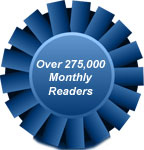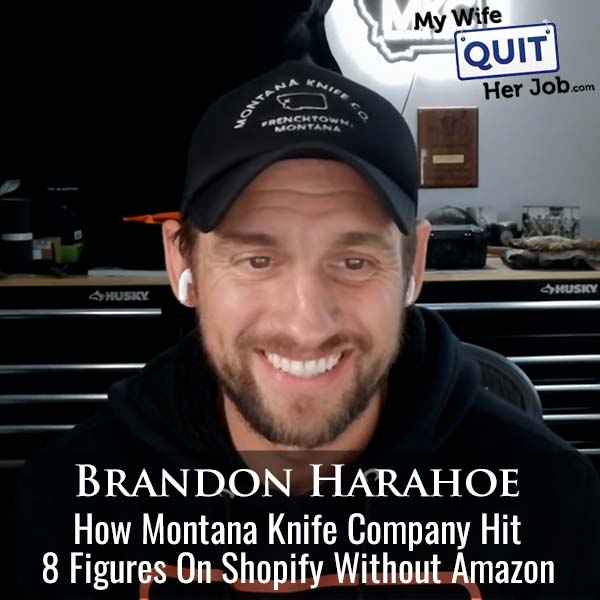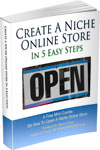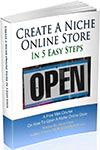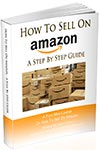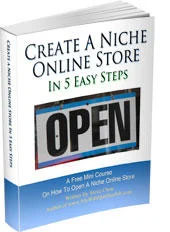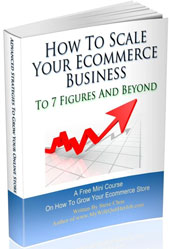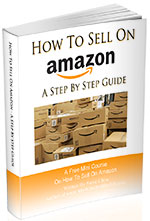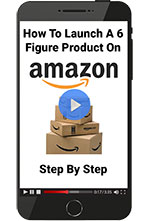Podcast: Download (Duration: 47:07 — 54.2MB)
In this episode, I chat with Brandon Harahoe, VP of Montana Knife Company, an 8-figure brand that’s proudly Made in the USA and built entirely on Shopify. If you’ve ever wondered whether it’s still possible to scale a massive ecommerce business without Amazon, Brandon’s story proves it can be done and done profitably.
We dive into how his team built a loyal community around American craftsmanship, the marketing tactics that fueled their explosive growth, and what it really takes to win as a DTC brand today.
Get My Free Mini Course On How To Start A Successful Ecommerce Store
If you are interested in starting an ecommerce business, I put together a comprehensive package of resources that will help you launch your own online store from complete scratch. Be sure to grab it before you leave!
What You’ll Learn
- The secret sauce behind Montana Knife Co’s Shopify success
- How they skipped Amazon and still hit 8 figures
- Tips for growing your shop with drops
Sponsors
SellersSummit.com – The Sellers Summit is the ecommerce conference that I’ve run for the past 8 years. It’s small and intimate and you’ll learn a ton! Click Here To Grab The Recordings.
The Family First Entrepreneur – Purchase my Wall Street Journal Bestselling book and receive $690 in free bonuses! Click here to redeem the bonuses
Transcript
Welcome back to the podcast, the show where I cover all the latest strategies and current events related to e-commerce and online business. Now in this episode, I have Brandon Harahoe, who is the VP of an eight figure made in the USA brand called Montana Knife Company. And if any of you out there listening are doubting that you can create an eight figure brand without Amazon, this is the episode for you because this company has been killing it with Shopify from day one.
00:24
But before I begin, want to let you know that tickets for Seller Summit 2026 are now on sale over at sellersummit.com. And if you sell physical products online, this is the event that you should be at. Unlike most events that are filled with high level fluff and inspirational stories, Seller Summit is all about tactical, step-by-step strategies you can actually use in your business right away. Every speaker I invite is deep in the trenches, people who are running their own e-commerce stores, managing inventory, dealing with suppliers, and scaling real businesses.
00:53
no corporate execs and no consultants. Also, I hate big events, so I intentionally keep it small and intimate. We cap attendance at around 200 people, so you can actually have real conversations and connect with everyone in the room. We’ve sold out every single year for the past nine years, and I expect this year to be no different. It’s happening April 21st to 23rd in Fort Lauderdale, Florida, and if you’re doing over 250k or $1 million in revenue, we also offer a private mastermind for higher level sellers.
01:22
Right now, tickets are the cheapest they’re ever gonna be. So if you want in, go over to sellersummit.com and grab your ticket. Now onto the show.
01:36
Welcome to the My Wife Quitter Job podcast. Today I’m excited to have Brandon Harahoe on the show. Now, Brandon was introduced to me by my good friend Kurt Elster from the Unofficial Shopify podcast. He is the co-founder of Montana Knife Company, an eight figure e-commerce store where all products are made in the USA. The company was 100 % D2C from day one. I don’t believe they’re on Amazon at all and they are killing it in the space.
02:05
And I wanted to have Brandon on for two reasons today. One, I wanna talk about the challenges of Made in the USA. And two, I wanna talk about how he scaled his business to eight figures 100 % with Shopify. And with that, welcome to the show, Brandon. How are you doing today? I’m doing great. And thank you for having me on the show. it’s cool to connect through our mutual friend, Kurt. He’s been a long time friend and he’s actually helped our brand a ton too on the e-commerce side.
02:32
when he reached out, says, Hey, I got a guy who has an awesome podcast. I was like, count me in and I listened to a bunch, know, you know, getting ready for this podcast. And it’s like, this is spot on with like what we’ve been building and how we built this and everything. Awesome. if you guys like Montana knife company’s website, Kurt Elster actually designed it over at ether cycle. Just give giving Kurt a little plug there. Yep. So, Brent, I know you’re the co founder of the company.
02:58
but you’re not like the main guy, like the face of the company, but what is the story behind Montana Knife Company? Yeah, so Montana Knife Company has an absolutely wild story. I mean, to the point where we’re actually trying to like, appropriately like, you know, film an actual documentary around it, especially with the phase of growth that we’re in right now, it’s just a really cool time to actually film something as like things are going on. But, you know, to kind of give you like the quick story is, you know, this, company, you know, started with Josh Smith.
03:28
You know, he actually started making knives at the age of 11. And then then he became then he became the youngest master bladesmith ever in the history of master bladesmith. And he achieved that level at the age of 19. You know, and he’s had that title for almost like 20 something years and no one’s no one’s been able to become a master bladesmith at a younger age. And some people have tried and failed. But, you know, Josh is a, you know, a true craftsman, a true artist. And, you know,
03:57
He is just obsessed with making the best knives. So, you he started as a really, really high end knife maker. mean, literally the show like Forged in Fire um is based off of what Josh has been doing, you but he was doing it 20 years before the show. ah You know, Josh is actually, think, on season one and two, too. they like just to understand like how he’s kind of like in this ether of, you know, knife making community and all that. um
04:22
You know, and then, you so that was, you know, his teens and then his twenties and thirties, you know, he became, you know, actually one of the best knife makers in the world. He was really known for like his high end Damascus work. But the problem was, is that all the knives he was making, they were like expensive pieces of art. Like people, you know, when they commissioned a knife from them, they’re like, I want a $15,000 dagger or I want like a $30,000 sword.
04:48
He has stories of him making knives for sheiks in Abu Dhabi and Dubai and getting flown over to the London archives and looking at all these historical swords and building replicas and all that. But at his core roots, he was born in Lincoln, Montana. He’s been a hunter since day one, but he’s always made the best hunting knives. But the problem was that for him to make a hunting knife for somebody,
05:17
You know just to justify time and material and all this stuff He had to charge like $3,000 for it, you know or even on the very lowest end, you know a cup like a thousand fifteen hundred dollars and then promise like people weren’t using them they would buy them and they weren’t being used and the reason why they weren’t using them is because like a the price and they were just so beautiful and it’s you know, so his thing was is like I make the best using hunting knife
05:43
you know, on the market. There’s no question, you know, I’ve made thousands of knives in my life. I can distill this down to this one knife that every hunter can take on any hunt anywhere in the world. But I’ve got to figure out how to do it in mass and get that cost down. So people actually use them like these aren’t meant to be collectors items like we want people to use these in the field. And our one of our early sayings was, you know, used, abused and passed down. That’s the goal. We want that knife to be used and we want you to pass it down for generations. um So like that’s kind like the backstory and where like
06:12
you know, Montana Knife Company was born and a couple of really cool things happened is, you know, his mom and him had like the foresight to actually go and register the trademark name Montana Knife Company and buy the URL in like 2000. Which is just crazy. Yeah. So when I came on board, I had to go find this, you know, URL that was owned by some little web agency in Montana, which you can understand was hard to track down and find and get it linked to our Shopify site and all that. So.
06:41
So that’s kind of like the prequel to what True MKC is right now. And then we launched the brand in 2020. And I’m talking height of COVID. The first time Josh and I met was almost right before the lockdowns, the country-wide lockdowns. It was like, yeah, should we start this? We’re like, well, might as well. Because he always says in 2008,
07:11
He kind of listened to the news and all this stuff and he actually stopped being a full-time professional knife maker when the economy crashed in 2008. You could probably understand the budget for a $15,000 knife kind of shrunk on most people’s P &Ls. he actually became a lineman for 10 or 15 years making really good money. But this has just always been kind of like eating out. I’m like, need to do this Montana Knife Company thing.
07:39
But then, you his thing was like, I just don’t have the marketing guy or like the business guy, you know, set up the business in the back end and the funnels and like just the advertising creative. in and that’s that’s where like Josh and I met and it’s like the rocket fuel, you know, we got the product, we got marketing. And that’s where it started. Okay, okay. So you know, what’s funny here is I have a couple colleagues that sell blades, not not knives per se, and they get all this stuff from China. Maybe it’d be heresy, I guess, if Josh did that. But
08:10
China seems to be significantly cheaper. The labor costs are 4X lower. And then even like the steel costs, I think are 15 to 40 % cheaper in China. and I know cost is like a big factor here. Can you just kind of comment on some of the challenges of USA manufacturing? And why did you guys decide to focus on Made in the USA? No, that’s a great question. And here’s the thing is like, you know, when we started this company, you know, it used to be easy to say that like, oh,
08:39
Chinese knives are cheap and they’re not that good and like all that stuff. The truth is, that knives coming out of China, knives coming out of Pakistan, Taiwan, like some of them were awesome. They were great knives. were very well manufactured. know, it took them, you know, they had 20, 30, 40 years competing with some of American brands, you know, to refine their stuff.
09:01
So we couldn’t say that like it’s a superior product. do think now we are a superior product, but at the time, like there were still good products coming out of China. But you’re right. It’s cheaper and you can just, you know, you can order 100, you can order 10,000, you can order 100,000 and they just show up in, you know, six months. but our biggest thing was, that like, you know, we’re watching this thing happen during COVID.
09:29
we’re watching supply chains get shut off, we’re watching all these things happen, and we’re just like, if we’re gonna do this, let’s do this the right way. And honestly, American manufacturing has been always true to my heart, it’s always been true to Josh’s heart. So it was just in our ethos to wanna do it, especially with him being an actual maker. And the other thing is too, is that so many things went right for MKC. One of the other things that went really right for MKC is that the entire knife market, I’m talking every company,
09:59
in the early teens and early 2020s, everyone was trying to race to the bottom of the barrel and make the cheapest knife possible. So they can just go sell it like a bella’s in a bubble blister pack for $20. And then it dolls and you just of like hock it in your center console or you put it in your closet and then you just go buy a new one because it’s not worth the resharpening. um And that was just kind like the mentality of the industry. And then we came in and we’re like, like
10:28
There’s not a lot of things that men pass down anymore, you know, from father to son to grandson. You know, it’s usually just like, you know, a watch, maybe some firearms and like the knives, you know, like no one’s going to want your iPhone 13. Like my kids aren’t going to want my Apple watch. My kids aren’t going to want the iPad. They’re like, no, that I can’t even open the iOS now. It’s 2050, you know? So these things that we carry on our body.
10:52
It’s different than what men used to carry on their body in the early 1900s and the 1500s, early like the 1950s, like watches and knives and wallets and things like that. like I said, there’s a lot of things that just kind of like, we’re like, it’s all just focusing on making the best product possible. And for us, that was making it ourselves. Would you say Josh is famous in this niche, even before when you guys first started? Absolutely. buy knives for him?
11:22
You know what’s wild like at the very beginning I would definitely say like our first like, you know, hundred customers were definitely fans of Josh and knew his pedigree and things like that What’s wild now is like it’s crazy because like there’s times that were like, oh, I don’t even know who Josh Smith was by own like five nights It’s just like the brand itself is just getting you know, big Okay. I mean, I don’t know anything about knives, but I do know that it’s pretty competitive uh so
11:50
You mentioned like these knives are heirloom quality, right? But when you’re first starting out in your marketing, can we talk about how you guys got your first sales? Like how does one scale a knife company? It’s a very competitive niche. Yeah, so it’s very competitive. um And also to like, it’s probably the oldest, like, I have a buddy that owns a seasoning company. And I always joke that him and I are in the oldest trades possible sharp objects and seasonings. Like it doesn’t get much older than that. So like,
12:20
know, there’s a lot of companies, I mean, if you just think of USA made companies, you know, lot of those guys have 120 years on us, a lot of them have 7080 years on us, they have government contracts, you know, they’ve perfected their manufacturing through mass quantities. mean, we didn’t know how to do anything in 2020. So like, that’s where it’s just like, so you know, we’re like, it’s just not like American made, like, we also had to figure out how to manufacture ourselves. And like, that’s what we’re doing. You’re like,
12:48
You might even hear the CNC machines like downstairs buzzing right now. You know, so it’s again, like it’s not like we’re placing an order with another factory and just hoping those knives come and we sell them. I mean, we’re literally making them. And like our first drop, like our first real drop, we we like, you know, I was like, hey, you know, we’ll probably sell like 25, 30. We ended up selling all 150 that we had cut ready to make. And literally the next day when we were packaging them.
13:14
I had to go to Staples and get a printer for the hook up to Shopify to print labels. Josh is in the other room, literally sharpening knives. His wife is helping us package them. Like I said, it’s not just building an e-comm brand and doing drop shipping. It’s like, we have to make this product. It adds a whole other layer of complexity. We have 90 people in our company and 65 of them on the manufacturing side. There’s only 15.
13:44
people on like the accounting and CFO and growth and you know, so yeah. So when you first launched, were you guys just running it out of the house or? Yeah. So it was Josh’s two car garage and then my bedroom. I was, I actually lived two hours. Yeah. I actually lived two hours north. You know, I was shooting all the product photography in my garage. I was going, and that’s a beautiful, you know, I was living in Montana is like, I could just go walk out in the woods. got the best landscape in the world. So, um,
14:14
You know, and I still want to answer your question, like how do we get those first like couple of sales? ah know, like we, so, you know, obviously like Josh, you know, he kind of had his, you know, his connections, you know, I’ve been in, you know, the marketing e-comm space for, you know, almost 15, 18 years at that point. uh I had a bunch of connections and we literally just relied so hard on our network for that first couple, you know, sales, you know, and then what we did is we just, just focused on two things. We focused on,
14:43
you know, just Instagram growth, because at that time that worked out really well for us. You TikTok wasn’t really around. So we put a lot of focus on Instagram. ah And I’ve been a photographer for 10 years. So I had like, you know, terabytes of all this beautiful Montana landscapes and like all this stuff. So I ended up dumping my catalog on there just to start getting followers and things like that. Well, because we didn’t really have knives because we’re still making them.
15:08
So we couldn’t even talk about the product. had nothing to sell for the first three months because we had to make the knives. So there’s a lot of just preloading that funnel before that first drop. was almost like doing a Kickstarter without actually taking pre-orders. Okay, so you built up an Instagram account and then you used that to launch. I know you guys have a pretty cool model and I definitely want to hear about it where you literally drop new knives every single week, right? Right.
15:38
Yeah, and the drop model’s wild. you know, I came, I spent five or six years in the apparel industry. You know, that company did a lot of drop models and stuff like that. But this is like totally different because it’s the same model, but there’s like, everyone’s like, oh yeah, Montana Nightclub is just good at like, you know, doing manufactured scarcity. Like they’re just manufacturing scarcity and they’re like dropping five knives and like, like no. I mean, literally, so we have our largest drop tonight. We’re dropping thousands of knives.
16:07
And I can tell you right now, I went downstairs and the entire shop is buzzing right now because they are way behind. And like we can only drop on the website what we can ship tomorrow. That’s always our commitment. So as many knives as they get built this week is how many knives get launched on Thursday night. And that’s always been our been our model. So from day one, you know, Josh and I put all this stuff on credit cards. We bought that first batch.
16:32
you know, of raw steel, we turn them into knives, you know, we got them assembled, sharpened, know, clean sheath packaged. And then, you know, I remember it just like it was yesterday, it was December 18th of 2020, we launched the first, you know, Speed Goat. And we sold them all out in like 14 minutes. And we’re like, oh, and then it’s like, we don’t have anything, we literally don’t have knives. Like we don’t have anything else to continue this business.
16:59
And we can’t call someone to make them because no one else knows how to make them. So we rushed, ordered more steel, we got them through the pipeline, and I think we had another drop within like a month, month and a half. So that’s what started creating this drop model naturally because I had six weeks as a marketer, I had six weeks and I made a commitment to post on Instagram every single day and send out emails and stuff like that.
17:27
I had six weeks where I couldn’t actually convert a sale. So I started pulling on some of my older backgrounds that I started coming up with apparel for the brand. even launched, in this time I even launched a Montana Knife Company coffee, uh like coffee, because I went to the local roaster and was like, I need something to sell. So we make a Montana coffee and we just white labeled some coffee and we did a drop for that in between the knife things.
17:55
But like that continued on for three or four years where it’s just like, you know, we sold them, we bought more, sold them. And we kept on expecting to never not sell out. like, our goal is to be in stock. We want to be a mass knife company. Like we don’t want to be a drop drop model company. Like that’s not our thing. But we just kept on selling out and we just kept on ordering more and ordering more. So when you’re talking about bootstrapping, I mean, like we literally just sold it, bought more, sold it, bought more. And then we started getting into a little bit of a cadence of like, all right, let’s
18:25
order in between drops so we have more frequent drops. So I just wanted to take a moment to tell you about a free resource that I offer on my website that you may not be aware of if you are interested in starting your own online store I put together a comprehensive six day mini course on how to get started in ecommerce that you should all check out it contains both video and text-based tutorials that go over the entire process of finding products to sell all the way to getting your first sales online
18:54
Now this course is free and can be attained at mywifequitterjob.com slash free. Just sign up right there on the front page via email and I’ll send you the course right away. Once again, that’s mywifequitterjob.com slash free. Now back to the show. So for the audience who doesn’t know what the drop model is, it’s basically you make a set of knives and then once they’re sold, that’s it, right? For that, for
19:21
And then so that for that first drop, you relied on connections to get those sales, but you can only rely on like your audience and your connections so long. So by then was the word of mouth good enough for subsequent drops or had the Instagram account and everything caught on? Yeah, so no, this is a great question. And I love these questions. It helps me like kind of like go back in time and think about like what worked and why it worked and stuff like that. so before Montana Night Company, um
19:50
you know, I owned my own agency and I specialized in linking Klaviyo and Shopify accounts. So if you’re a big Shopify account at the Klaviyo, I’d come in, clean things up, help you with your campaigns, help you with flows, things like that. It was really successful at the time, but it was cool because I got to go look in the back end of like 20 different companies and see what they’re doing, see what you’re doing wrong and see what they’re doing wrong. So I got to build MKC’s like email list from scratch. And I’m talking I build it like and it was just so
20:21
I was just so obsessed with building the highest quality engaged list possible. And that’s what we did. like, you know, for those first like six months a year, the main thing I focused on was email. Like I used to tell Josh, I don’t care if your grandma buys a knife, she has to do it through a Shopify website and I want her email. know, so like, just being really strict about that because with us being a knife industry, you know, we couldn’t figure out how to do paid advertising until about year three or four.
20:50
because everything was so restricted because everyone considered us a weapon because they just lumped everything that’s hunting into weapons. I’ve had calls with Google Ethics and Meta and all this stuff and they’re just like, it’s a slippery slope, we let you go, it lets the door open for other companies and we’re like, I understand. But it also kind of keeps people out of our field too because you can’t just rely on paid ads. And it’s something I’ve never relied on.
21:19
um for building this company. Now it’s just gasoline on top of our organic. Right. Okay, so email lists. uh How did you get people on your list in the beginning? It’s hard to get people on Instagram onto your list, right? It is. It definitely is. I mean, and that’s where like the drop model thing kind of worked was just like, if you want this knife, sign up for an email. Like, simple as that. Like we’ve never done a discount for an email.
21:44
You know, I and I’ve played all those like, you know I’ve done all those different things like, you know build an ebook and you know exchange that for their email and like those things work those things are great but We had a certain type of energy at the beginning of the company where people wanted our knives so bad They are willing to give it their email and text message first time they visit the site to get this knife because they saw him sell out and in the knife industry it was absolutely wild for Someone to do drops without pre-orders
22:14
I mean, we had some of the CEOs of the biggest companies in this industry being like, you guys are crazy. If you just took pre-orders, you can leverage that pre-order database and go get bank notes at a cheaper rate and all this stuff. And we’re like, we’re like, we are not gonna take anyone’s money that we can’t ship the product the next day. And I’m talking since day one, I bet you 99 % of all knives have shipped the next day. And the reason is A, that, but then also two is like,
22:43
we were still learning how to do this manufacturing thing too. So we didn’t want to take someone’s money and promise them like, you’ll have a knife in three months and that batch come in wrong or get lost, you know, in between heat treat and blade grind or like there’s all these like, there’s a bunch of risk involved with that. And we just never wanted to take someone’s money that we couldn’t give them the product the next day. so like I said, there’s a lot of
23:09
We really went a lot against a lot of norms in a very, very old industry. like I said, it just worked out for us. Walk me through, like you said you have a big drop coming. Walk me through the preparation leading up to the drop to make it the most successful drop ever. Yeah. this drop is fun. So this is our Blaze Friday. uh so what Blaze Friday is, like,
23:35
When I’m setting up our marketing plan and everything like this, I obsess about uh repeatable successes. So like that’s why we do a drop every Thursday. And then we actually started adding um in-stock drops on Saturday. So we’re almost doing like a hundred drops a year just for knives. And we’re also dropping a piece of peril every single Tuesday and now Friday. So we’re dropping two pieces of peril a week plus two knife drops. But then.
24:02
to make it different. if you pull back and you look at your full year marketing plan, ah everyone’s so focused on uh quarter four. Everyone’s so focused on Black Friday. I’ve been through like 18 Black Friday cycles for D2C e-comps. I know the playbook, I know what’s going on. I’m just starting to realize, especially with Montana Knife Company, our customers aren’t buying because it’s Black Friday.
24:30
they’re buying because we’re putting all this freaking energy into it. like, you know, like we’re throwing everything at the wall. We’re coming out with new products just for Black Friday. And I’m like, why can’t we do this in quarter three, quarter three, sorry, quarter two, or, you know, or quarter one, like when we’re, you know, traffic’s a little lighter on quarter two. So what we started doing is like doing a Black Friday event every single quarter. So it’s the same playbook as Black Friday, but we’re doing it on August, you know, 14th.
24:58
um And you know in though, you know the two-month lead-up to it just like you would start in October, you know Facebook ads, know emails Captures and then the good thing is too is like we we talked to our customers and we’re like, what do you guys want? They’re like we love the blaze knife So we made that a big event. So all of our knives that dropped tonight are blaze orange. So You know, it’s so when you’re answering that question, like there’s there’s different types of drops we do and The ethos of the company is this just work
25:28
put in more effort than anyone in this industry has ever done before. So when we restock a knife, we actually act like we’re relaunching that as a product launch. Like we go through the whole thing, like a brand would, what most brands put in effort of launching a product, when a knife restocks, that’s how much effort we put into it. And when we launch a new product, we honestly act like we’re almost relaunching our brand from scratch. Like, so it’s just about the effort that’s being put out there because like, again, like,
25:58
you know, only up until about a year, a year and a half ago, we were able to run paid ads. So the excitement had to come from us from the inside of the business. So does this mean that the knives once they sell out, you don’t sell them again, but occasionally you’ll bring them back but then you relaunch them in a drop? Is that how it works? Well, no, not actually. So so this is another thing that is so wild about our company. So opposite of the industry. There’s a lot of other name companies that do drops now. But what they do is they’ll
26:27
come out and they’ll drop like 30 super custom knives that are all different and they’re like, this is the only time you get this. MKC is the complete opposite. You we have our, you know, our 20 different models and we rotate them and they’re always in the same six colors. Like I’m obsessed with like our branding. Like when someone sees our knife hanging on a hunting pack, I want that person to be immediately like, oh, that’s a Montana knife company knife. And you can’t do that with all this like crazy customization. And I think that’s where the knife world
26:57
got a little crazy was just like people were just so obsessed with trying to look like a custom knife company. It would have been easier for us to do that with Josh’s pedigree. Like, he’s designing these custom knives and everything’s different and everyone’s individual. But it’s more of like the Rolex model. It’s like, oh, he has a black foot. That black foot is kind of the equivalent of like the Submariner. Like, oh, he has a stonewall. That’s like a Daytona. And it’s like.
27:23
They don’t change, and there’s slight variations as we grow, but they’re not blatant variations where we’re gonna come out with pink handles or we’re gonna put jade in it or stuff like that. But then when we do do an event like this, Orange Knives, it’s insane because this is the only time you get it. But we only do that four or five times a year. So you have your staples that are always available on your site.
27:52
you do drops every single week and those are variations of those or. So yeah. So I mean like right now we have I think we have like 28 different models. So I mean like if you think about it like you know like we’re just going to make like for example like OK we’re going to chef cleavers this week downstairs. They’re just making as many chef cleavers as we can finish in that week. And that’s all we focus on marketing wise. We sell those those sell out. And then like next week we’re going to focus on
28:21
you know, a large skinning knife for hunting. And those knives just like rotate. it’s like, so there’s no reason to really like do like, like sit down the pipeline, like we’ll probably have to start doing some crazy custom stuff. And like, like you’re seeing Yeti now, like Yeti’s been selling the same cooler for 15 years. And now they have to sell it in like, they like green and they have to sell it in lavender this and match this persona. And they go after, you know, you know, know, Duck Hunters in the South want this camo.
28:50
And like that’s probably like a part of our evolution. But as of right now, it’s just about like my biggest thing is just getting as many new people into our brand as humanly possible just to buy our basic products. So I think I understand now. So you have scarcity because those cleavers that you mentioned, I’ll have to wait for the next cycle of manufacturing to get my hands on those. Right. Yes. Yeah, exactly. So it’s like you’re buying now or, you know, it might be another year.
29:17
It might be six months, it might be three months. Yeah. So you mentioned at the beginning of this interview though that you didn’t, you don’t want to sell out, right? Right. So how do you determine the quantities? I mean, you could just make a lot more and not sell out, right? Or. Yeah. And that’s, well, that’s also the balance. Like, you know, with our, you know, with the current building in right now is around 10,000 square feet. Like there is a manufacturing limit.
29:44
Like there’s an actual limit. So we have to like, what are our drop knives? What are in stock knives? And like, we have to have that balance of, you know, like what knives. Our goal is to make as many knives as we can possibly think and sell, but there is like a give and take that we have to account for. ah And, you know, so like, you know, there’s like five products right now on our website, you know.
30:08
that are in stock, that we’re trying to keep in stock at all times. Those are what we call our annuities, like the Blackfoot, the Speed Goat, the Stonewall, and a couple of our MiniBlades. so our goal was just get as many of those out into the public as possible so that our current funnel is saturated with those knives so that they’re just not selling out. Because if a new customer comes to our website, they have nothing to buy, I have nothing to convert to. So the idea is just like, okay, just…
30:35
almost get these guys sick of hearing about Blackfoot. They’ve had enough and now when a new customer comes in, they’re like, oh, there’s a Blackfoot available, cool, I’m buy that. Or my dad’s birthday’s coming up, I need a gift. Like I said, there’s a lot of things we’re doing that not a lot of companies get the chance to do because A, they’re either omnichannel through wholesale, where like, oh, it’s not on your website, but I can just go to Amazon or I’ll go to Cabela’s or I’ll go to there. So we get to control that narrative a little bit more.
31:05
So you don’t do any wholesale, is that correct? That’s correct. We have a couple stores in very select towns. There’s a small store oh in Jackson Hole right next to the Antler Arch. It’s more about foot traffic advertising than it is needle mover. And it’s literally then less than a half a percent, maybe even less than that, versus our competitors that are 60%, 70 % wholesale.
31:35
Right. So it seems like you are selling at the capacity that you can make these knives right now. So there’s really no reason for you to go wholesale. Is that accurate? Right, right. And the goal down the road is like, we want to be able to that point where we are wholesale. But even if Cabela’s came to us and I mean, we have big box stores knocking our door all the time and say like, hey, we need 60,000 knives for 2027 or 2026. We’re like, like is that worth?
32:04
cutting down on our capacity to D to C to supply wholesale. But we wanna do wholesale down the road because there are people who are not buying online, especially our knives, the older generations and things like that. They wanna see it, they wanna feel it, they wanna buy it from their local shop. We are missing out on that. And we see that and we know that. uh But it’s just something that it’s, we just have to have the responsibility of just understanding that’s an opportunity that’s.
32:33
this is down the road. Sure. You know, what’s funny is I looked on Amazon for Montana knife company right before this interview. A of people search for it. I know on Amazon. But yeah. And so I guess like if you had the capacity, would you guys be on Amazon or is Amazon something that’s not in the cards? No. So Amazon, Amazon’s fun because like I actually hired someone who was on our marketing team was specifically hired for us to onboard on Amazon. And we hired him and we hired him three years ago.
33:04
So we still have it. But he’s also amazing marketer too that helps us with all of our DTC and all that stuff. And then also to our COO, Andrew, we actually poached him from Amazon. So he was in charge of the entire Spokane packaging and shipping fulfillment thing. So we have the full system. We have the dude that knows, because a lot of companies where they fail Amazon is the shipping and the packaging and getting everything right the first time.
33:33
So we have all the right components for it. um We’re just waiting for the right time, you know, in our life cycle to actually onboard that. But it’s something I’m super interested in and like, yeah. So yeah, that makes sense. It’s not really compatible with the drop model, I guess. It would have to be with staples, right? It would be. Yeah. Yeah. And I think there’s a lot of brands that do that where there’s just like their core products are on there that are on their website. And then the idea is kind of get them to bite.
34:03
on that one product, the product is so good, they come back and they want another one, but it’s not on Amazon. So they have to go to their, you know, their, their, homepage. because these knives are, are what I call, I guess, heirloom knives, do people buy a bunch of them? Yeah. So if you said like, that’s the wildest thing is like our return rate is absolutely insane to where it was my, it was actual metric for me to decrease our return rate.
34:33
which is very untypical for a lot of companies, but it was like, do I get new people into our funnel? So we have a lot of people buy them, we have a lot of people to collect them, we have a very, very ravage Facebook group that buys, trades our knives. It’s really cool to watch, and they’re some of the best dudes ever, and we use them, and we’re in that group all the time, Josh and I, and we use that as quality control, we use that as product design. We’re asking them always, hey, what do you guys wanna see next? What do you like?
35:02
Don’t you like, and then like we also. No, we didn’t. Oh, you didn’t. Okay, wow. No, okay. I know. So some other fans created it. um We feed it, you know what I mean? Like we definitely promote it and let people know that it’s there. But you know, it’s up to I think six or 7000, you know, people in there. And it’s like, there’s probably a post every 10 to 15 minutes, which is just crazy to us. It’s so cool. It’s so cool to see.
35:30
Can we talk about your social media efforts? I know you have a YouTube channel. I was watching some videos there. uh Is that a big driver of business or? It absolutely is. Yeah, so our social is, you know, we put out a lot of content. I’m still personally running our Instagram. So I use the Instagram as like, hey, this is the voice, the brand and all this stuff. So what I post on Instagram, like then we’re able to distill that down over the other channels. ah And so, but like our YouTube is a little bit different.
35:58
because like, a, you know, it’s not photo based. Like our Instagram actually has always been really good with photos, not that great with video. Our YouTube is really good with video. And to me, our YouTube channel started as just a part of our big SEO hack, like our big SEO plan of like, how do we just like, we’re looking at all our competitors, they’re kind of sleeping behind the wheel, let’s just like day one was the first contractor ever hired was my buddy Joel from Flux.
36:26
and he set up SEO, I’m talking day one. We were paying this contractor before we were paying ourselves a salary, because I was like, there’s this massive hole that these people are just ignoring because they’re so wholesale focused. I was like, we’re gonna come in and now like Montana Knife Company is ranking better than companies have been around for 100 years. literally 100 year head start and just focusing on the boring thing. through that we were writing weekly blogs about knives and then every blog had a video.
36:56
And that video was the information, it was just like the digested video version of the blog to kind of help with everything that Google’s algorithm likes for SEO. So that’s where the YouTube channel started. It started as extremely informational. And then every once in a while, one of those videos would pop off. How to sharpen a knife correctly, sharpen a knife like a master bladesmith, how to field dress a deer, how to go elk hunting, how to do this. So that’s how it started. And then we started doing the behind the scenes, like the old school Gary V days where it’s like.
37:24
a weekly vlog of like what’s happening downstairs. We have a very, very eclectic group of people downstairs, a lot of personalities, they film really well, they love being on camera, they’re a bunch of goofballs. And like that to me is like, so our weekly vlogs are like our, is that middle funnel, we get you in and then you start watching our vlogs and stuff like that you’re like, oh, these are guys just like me. And that’s the thing about American manufacturing is like, you can go have a beer, you know, with like the guy that sharpens your knife.
37:52
So YouTube, A, has been amazing because A, we finally figured out how to do paid advertising on YouTube. what’s crazy is we’re getting a much greater return because of how good our organic content is. So they’re seeing our ads and our commercials, but they’re staying and subscribing because of our content. So it’s something we’re really proud of. It’s been really working. We only just started putting true focus on it for about the past year, year and a half. And it’s one of our top
38:22
four to five converting things on our exit survey, just YouTube itself. Are you guys doing short form videos also? on TikTok? We are, yeah. And of all those, would you say, like if someone listening to this is trying to prioritize what to do, what would you prioritize? So I get that question all the time. It’s so dependent on a product. Like right now, like, you know, some of my friends have some of these companies that are just crushing on TikTok shop.
38:50
because they have a product that is in that price point that is, that you’re able to go trade, you know, to a, you know, influencer for a commission. Like we don’t have that. Like for us to send a $1,300 chef set is a big gamble. Yeah. So like, so we don’t even have that option. So like, I can’t say like there’s this one specific thing. It’s all based off of a like product fit. And then B is like what you’re good at. Like one of the,
39:18
co-founders of the company was amazing behind the camera. So Instagram was just like natural and know, TikTok was not, cause it’s like turning the camera around and at that time it was just dances and like all that stuff. so what I would always, what I always advise people is like, whatever your strongest suit is that you’re able to do every day. Like if, if it was like that, that’s why we have no Twitter. Like I’m horrible at writing. I’m horrible at copywriting. Like I don’t want to, you know, like, our Twitter has been ignored for the past like five years.
39:48
It’s just because it’s like we don’t have someone who has that, you know, that verbatim flow just to sit there and tweet all day. Yeah. Actually walk me through your posting schedule. So Instagram you post every single day and like, yeah. Okay. Yeah. So I’ve posted every single day for the past five years. I have not missed a single day uh of posting on Instagram. uh
40:14
And most days we post two or three times depending on the content that we have or what type of drop it is and things like that. So like that’s the nice thing now is like the new algorithms, you it’s so favorable to just getting as much content as possible before, you know, they use almost like, um like hurt you, it almost used to hurt you to post twice a day because you know, like it just had to sit in the feed and finally get seen. Now it’s, you know, fed to new people. yeah. And you’re in there answering comments and everything on the Instagram as well.
40:43
I do a little of that, it got to a point where we actually had to hire someone. So we have someone that handles comments and our DMs, just to make sure that we’re… Because there’s a lot of really big names that slide into our DMs and stuff like that, so we want to make sure they’re getting addressed as fast as possible. And then even more importantly, our customers are using that as a form of customer service. And then our DMs, our comments are very important because we want to respond to every single one.
41:10
And then are you guys still blogging given the changes with AI and like the Google search landscape? Yeah, this is the this is the I cannot take any credit is just pure luck. But like, yeah, we’re still doing one to two blogs every single week. We’re doubling down on it. We’re actually creating video series that we turn into blogs. Now, here’s the wild thing that we did not see coming in 2020 when we when we set up this SEO program to like break down everything about
41:40
every knife, every steel, every blade grind, every handle, every, you know, cause like when you, you know, when you do the SEO thing, you do the spoken hub thing and it’s just, eh so over the past five years, you know, we have, you know, blog a week, you know, so, you know, and we’re using gorgeous AI and we had five years of training. We dumped that into our AI agent and it knows our company better than anyone else. Like,
42:05
That’s the thing. That’s that’s like I said, there’s so many things that just worked out for us that like so like so we’re definitely not slowing down because like because like and then you know, then we obviously index it with all the you know, the the chat GPTs and grunks and stuff like that. So and they’re pulling information from our website as a trusted voice. OK, I think this like answered all my questions because I was originally I was like, OK, well, you guys are probably significantly more expensive than like a Chinese competitor.
42:33
But it sounds like you’ve created this community and this cult following for your knives back by Josh’s background and you’re just killing it on the social and community front. Yeah. And the biggest thing is we just show up every day. If I had to give any advice to any marketers, it’s just like, the only thing that’s gonna beat AI and really good paid ads is you being excited about your brand yourself. I can’t tell you how many marketers I talk to who just
43:03
don’t care about their company, they care about their bonus at the end of the quarter. Like I care more, like this is our lifestyle. This is the company we’re growing. We’re trying to grow it every day. Like we’re taking pictures of our new building, get built. Like if you’re not excited about your company, why would your customers be excited? Like that’s like, I think that’s the hack in 2025 and six and seven is just the human element of this whole thing.
43:28
I mean, you guys are doing everything right, documenting everything, putting out tons of content. mean, I think that’s the way to go. I mean, that’s how to get indexed. And that builds the personality for you guys. mean, content is like the backbone of what you guys do, right? I mean, the drops are cool too. I mean, what I like about the drops is you have scarcity, like every single day. It’s every other day, it seems, right? Yeah. So what’s it look like going forward? It seems like you guys are building a new facility or something, right?
43:57
Right, right. So, I mean, you know, the building that we built now is still on Josh’s property. It’s literally right next door to the two-car garage that we started on. And the goal for this was like, this building was supposed to keep us like in motion for about five years was our plan. Ten months into us moving into here, we started the building of the other one. So it didn’t last us that long with our growth. our next facility is, you know, 51,000 square feet.
44:23
It’s gonna have full retail store. We’re gonna have a Black Rifle coffee in the building itself. So it’s gonna be a destination right here in Montana. It’s right off of Highway 90. And um then like I said, the goal is to be 100 % self-sufficient in our manufacturing, even all the processes that we would use to have to outsource heat treat. Almost every, I I can only say this, every knife company right now is…
44:49
outsourcing, heat treating, and bevel grind, and all these things to people who just do all the knives. So now it’s like our goal is like, okay, let’s roll the dice and start bringing all that stuff in house and just be 100 % self-sufficient. um So we’re self-sufficient on our marketing, the DTC, our massive email list, text message list, and then we’re self-sufficient on our own product and being able to make it and things like that. I love it, man. Especially with all these tariffs going on, you guys are well positioned for everything.
45:18
And I love how you’re self-sufficient. You’re not really depending on anyone. And so you’re in full control of your own destiny. So Brandon, uh thank you so much for coming on the show. Like if people are interested in your knives and just checking out some of your content, where should they go? Yes, just Montana Knife Company. You can Google it MKC, Google and just Montana Knife Company. uh Check those out. Follow us on Instagram, DM us, pop in the comments if you heard it from this podcast.
45:48
We’re extremely accessible. can literally DM Josh anytime. can DM me anytime. uh That’s our goal is like, we wanna take this back to the older times where like, you used to know the person who owned the business and it’s uh just not a boardroom looking for bigger profits. it’s us and I think that’s what people like following us is like, we’re figuring this out. We make mistakes. We’re very transparent about it, but we also have a lot of wins.
46:17
Dude, I love it, man. Thank you so much, friend. I’m so glad that Kurt introduced this. Yeah, absolutely, Steve. This has been great. Hope you enjoyed this episode. The way Montana Knife Company markets their products is pretty cool. Go check out their website and sign up for their email list. For more information and resources, go to mywifequitherejob.com slash 615. Once again, tickets to the Seller Summit 2026 are now on sale over at sellersummit.com.
46:44
If you want to hang out in person in a small intimate setting, develop real relationships with like-minded entrepreneurs, and learn a ton, then come to my event. Go to SellersSummit.com. And if you’re interested in starting your own e-commerce store, head on over to my wife QuitHerJob.com and sign up for my free six-day mini course. Just type in your email, and I’ll send the course right away via email.
I Need Your Help
If you enjoyed listening to this podcast, then please support me with a review on Apple Podcasts. It's easy and takes 1 minute! Just click here to head to Apple Podcasts and leave an honest rating and review of the podcast. Every review helps!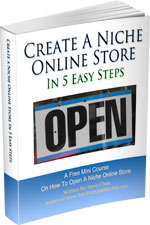
Ready To Get Serious About Starting An Online Business?
If you are really considering starting your own online business, then you have to check out my free mini course on How To Create A Niche Online Store In 5 Easy Steps.
In this 6 day mini course, I reveal the steps that my wife and I took to earn 100 thousand dollars in the span of just a year. Best of all, it's absolutely free!

